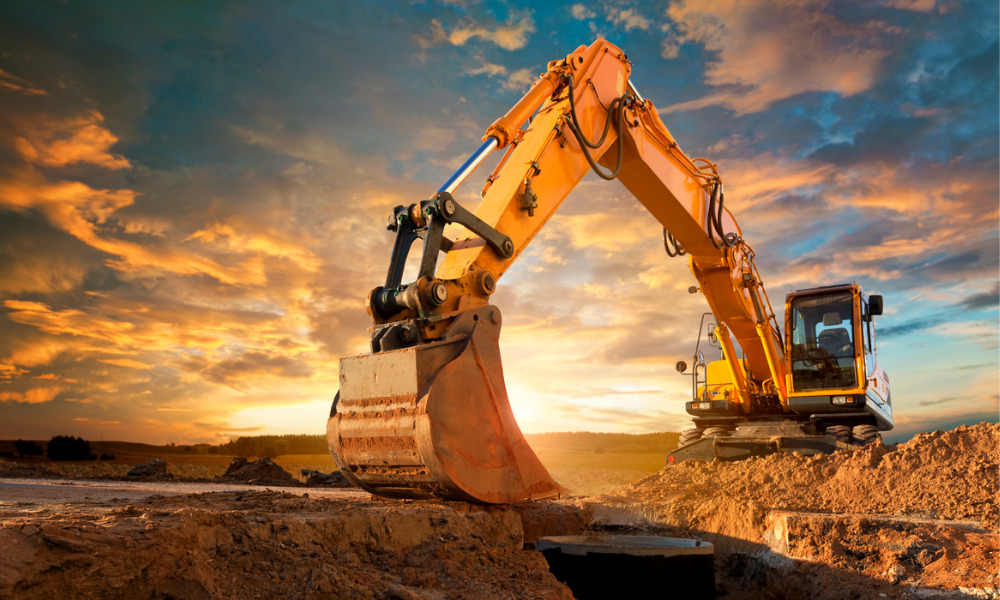Why these critical tips can protect lives on construction sites

Construction sites comes with many potential safety hazards and one of the most common sources of injuries and fatalities is the heavy equipment and machinery used to do the work. We’re talking about the excavators, graders, bulldozers, dump trucks and any other large machines being used to get the job done.
There are three critical hazards health and safety professionals in construction should be aware of and plan to control. Canadian Occupational Safety spoke with a leader in construction safety training, Craig Nicholson, who owns and is the director of Construction Workplace Safety Training Limited.
Struck-by incidents
Struck-by injuries and fatalities are an incident in which a worker is hit by a moving vehicle or piece of equipment. According to the Infrastructure Health & Safety Association, struck-by incidents accounted for 13% of all workplace fatalities in Ontario between 2007 and 2016. Nicholson says there are three main causes of struck-by injuries and deaths: no signaller or a distracted signaller, poor communication between operators and workers on the ground, and a lack of a traffic plan.
Nicholson says developing a traffic plan and designating a signaller can go a long way in reducing risk on a construction site where heavy equipment is being used.
“Having a having a good orientation package, making sure what's expected of the operators and the people that are on the ground, rights of way, if equipment has to enter a public roadway, is there sufficient protection to keep people from being harmed or injured? Is the person that's performing traffic control properly trained?”
These are all questions health and safety managers will want to make sure they are thinking about before work begins. When developing a traffic plan Nicholson says being aware of the surroundings is key. Look for exposure to pedestrian traffic, potential blind spots, power lines, and other sources of electricity.
“A well-designed, well thought out traffic plan is really a key to minimizing a lot of those injuries and fatalities,” says Nicholson.
Improper operation
Nicholson says one of the big problems he’s seen over the years is operators who think they know how to properly use a machine or piece of equipment but overlook best safety practices. “A lot of operators don't take the time to read the manual,” says Nicholson, and that can lead to improper use, “they don't understand the capacity or the limitations of the equipment, and they'll often override those limitations.”
Health and safety leaders need to recognize that just because an operator is well versed in a bulldozer it doesn’t necessarily mean they can jump into an excavator or grader without proper training. They will want to make sure the operators read the manuals before operating a piece of heavy equipment.
Nicholson points to a labour shortage in the skilled-trades as one of the reasons why the construction industry is seeing operators bounce between different types of heavy machinery. He says this will be an ongoing challenge and while “the industry is starting to slowly come around with understanding their responsibilities,” Nicholson says there is still “a long way to go.”
Maintenance
Poorly maintained and malfunctioning equipment is another hazard that can lead to serious injury or death on a construction site. Recently a worker in Alberta died while servicing an excavator. “You should know the critical components of the equipment,” says Nicholson, “you should be inspecting the parts that are noted inside the instruction manual, or the operator's manual.”
It’s not just operators that need to know this type of information, according to Nicholson, but supervisors also need to be well versed on the ins and outs of every piece of equipment being used under their supervision.
In the event of a serious incident, Nicholson says investigators will be looking to see whether the equipment has been inspected and maintained. This is when having written records of inspection and maintenance is crucial and Nicholson says it doesn’t necessarily matter if the equipment is owned or leased.
“If the equipment was leased, it doesn't exempt the operator from having to do a daily inspection. They still need to inspect it as if it was their own. I think that's a very common misconception as well in terms of maintenance.”
Maintenance, improper operation, and struck-by incident are just three hazards health and safety professionals need to control when overseeing work involving heavy equipment. But there are several others and a full list of rules and regulations in Canada be found here.





